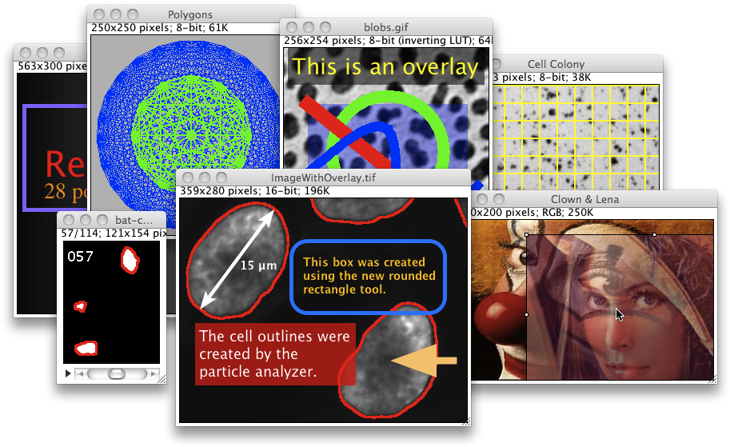

#IMAGEJ SOFTWARE NIH SERIES#
Both sonolytic damage and free radical attacks on polymers have been proposed to contribute to the degradation of PEG, a lipid–PEG conjugate, and PEG-containing block copolymers of the Pluronic ® series (also known as poloxamers). In addition, sonication in aqueous media is capable of splitting water into hydrogen atoms and hydroxyl radicals that combine to produce H 2O 2 and free radicals.

It is well known that ultrasound sonication involved in the dispersion and functionalization processes generates cavitation bubbles that collapse, producing high local heat, pressures, and shear forces. Various PEG constructs are also used in the covalent or noncovalent functionalization of NMs, often to provide functionalities for appending specific ligands to the NMs for biomedical applications. Polyethylene glycol (PEG) and related polymers are often used as dispersants in the preparation of carbon nanotubes and other nanomaterials (NMs) for use in aqueous environments. In addition, the approach can be used to rapidly screen various sonication conditions to identify those that might minimize PEG degradation to acceptable levels. Degradation of PEG polymers after sonication is readily detected by the reduction of band intensities in gels compared to those of non-sonicated, intact PEG polymers. Digitized images of gels are acquired using a flatbed photo scanner and the intensities of BaI 2-stained PEG bands are quantified using ImageJ software.

Intact PEG polymers and degraded fragments are resolved on sodium dodecyl sulfate polyacrylamide gels by electrophoresis and visualized by staining with barium iodine (BaI 2). It is therefore useful to have a simple and inexpensive method to determine the extent of potential PEG sonolysis, as described in this chapter. However, PEG is very sensitive to degradation upon sonication and the degradation products can be toxic to mammalian cells and to organisms such as zebrafish embryos. For example, carbon nanotubes are frequently sonicated with PEG-containing surfactants of the Pluronic ® series or phospholipid-PEG polymers to noncovalently functionalize the nanotubes. Polyethylene glycol (PEG) and related polymers are often used in the solubilization and noncovalent functionalization of carbon nanomaterials by sonication.


 0 kommentar(er)
0 kommentar(er)
